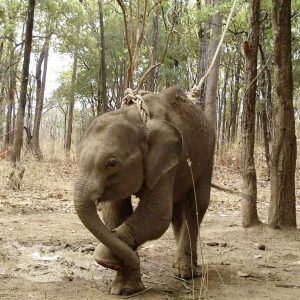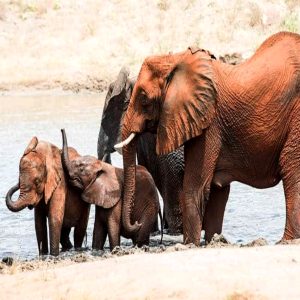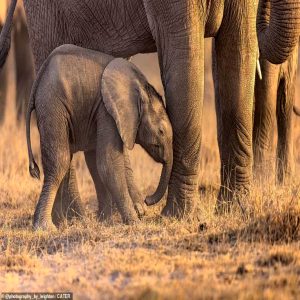![]()
Elephant family. © John Michael Vosloo / Shutterstock
The African elephant is the largest living land mammal and one of the world’s most iconic animals. No one coming face to face with an African elephant in the wild could fail to be awestruck by its colossal size, raw power, magnetic presence and sheer majesty. The fact that such a creature even exists should be a source of amazement. The fact that its future is in jeopardy should be a wake-up call to us all.
African elephants have recently been recognised as two distinct species: savannah elephant (Loxodonta africana) and forest elephant (Loxodonta cyclotis). They are now categorised, respectively, as Endangered and Critically Endangered on the IUCN Red List of Threatened Species.
Fascinating facts about African elephants
Ten tonnes
The weight of the largest recorded African elephant, which reached four metres high at the shoulder.
![]()
African elephant. © Timur Jack-Kadioglu
Gender equality
Unlike Asian elephants, both male and female African elephants have tusks.
100,000
The number of muscles in an elephant’s trunk – that’s more than 100 times the number in a human’s entire body.
What is the difference between savannah and forest elephants?
Forest elephants used to be classified as a rarer subspecies of African elephant, but experts argued that they should be treated as a distinct species. They have now been officially separated. As their names suggest, savannah elephants and forest elephants favour very different habitat, but there are also clear physical differences between them. African forest elephants are shorter and less bulky than their savannah counterparts. They have smaller ears, straighter and more downward-facing tusks, and darker skin.
The amazing anatomy of an African elephant
An elephant’s trunk is such a familiar feature that we take it for granted, but it’s one of the wonders of the natural world. This portable toolkit can pick up a peanut or uproot a tree. It’s a keen nose, suction pump, power shower, telescopic arm, snorkel, trumpet, fly swatter and lethal weapon rolled into one.
Elephants have poor eyesight but their sense of smell is three times sharper than a bloodhound’s. They can sniff out food and water from miles away. The enormous ears of savannah elephants prevent them from overheating in the baking temperatures. they act as giant fans when flapped, and release heat through a vast network of blood vessels close to the skin.
The tusks that have made elephants a prime target for ivory poachers are actually massive incisor teeth protruding from their upper jaw. Elephants use them to dig for water and minerals, strip bark from trees, lift and move heavy objects, protect their trunk, and defend themselves.
African elephants have brains three times the size of ours, a proverbially great memory, and cognitive powers on a par with chimps and dolphins. They show empathy and even bury and mourn their dead.
What do African elephants eat?
African elephants can consume up to 300 kilos of food a day. They also ingest salts to neutralise the toxins in leaves and bark. Elephants have a varied vegetarian diet that includes leaves, shoots, bark, grass, fruits and seeds, but they have particular preferences and dislikes. As a result, elephants have a huge influence on which plants dominate, disperse or disappear within a local ecosystem.
Why are African elephants important?
African elephants have a significant physical impact on their environment. They make wide paths, enlarge waterholes, plough the soil and create caves as they dig for salt. As such, they are both keystone species. African forest elephants, in particular, play a crucial role as seed dispersers and forest gardeners. They also help to combat climate change: foraging in herds, they trample or consume huge quantities of saplings and smaller trees. By thinning out the vegetation, they promote the growth of the bigger trees, which capture and store the greatest amount of carbon.
Where do African elephants live?
Savannah elephants favour grasslands, deserts and other open landscapes. Their main strongholds are in southern and eastern Africa, but populations survive in over 20 countries. Forest elephants inhabit dense tropical forest in Central Africa and a wider range of forested habitats in West Africa. The range of Africa’s two elephant species seldom overlaps, but both species are known to occur in countries including South Sudan.
How many African elephants are left?
Less than 50 years ago, there were well over a million elephants in Africa – a figure that includes savannah and forest elephants. Today, around 350,000 savannah elephants remain. Forest elephants are obviously far harder to count, but numbers are estimated to have fallen by an astonishing 86% in just 30 years.
What threats do African elephants face?
With the exception of a pride of lions famed for its elephant-killing exploits, adult African elephants have no natural predators. The only threats they face are human-related.
Traditionally the major cause of the African elephant’s decline has been poaching for ivory. While this still remains a threat, other issues caused by rapid human population growth have emerged.





